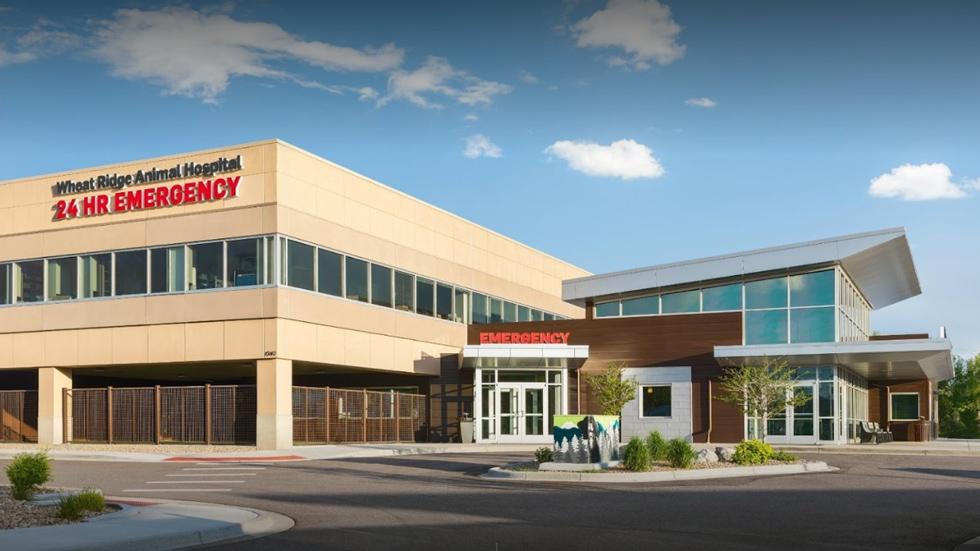
Widespread pet ownership and advances in veterinary medicine have translated into increased spending on veterinary care. While this demand has drawn institutional investment into veterinary practices, ownership of the underlying real estate has generated less attention—and created an opportunity for Terravet REIT Inc.
In 2012, Daniel Eisenstadt, then president of Community Veterinary Partners, led an acquisition that paved the way for the formation of Terravet, where today he serves as CEO. The purchase of a building leased to Community Veterinary Partners, the corporate owner and operator of veterinary practices, got him thinking about the real estate opportunity arising from the growing mismatch between the ownership of veterinary practices and veterinary real estate.
“What occurred to me at the time was that there was an awful lot of high quality, niche medical real estate that had mostly been developed by veterinarians and was still owned by doctors, even though practices were increasingly being purchased and operated by institutionally backed capital,” Eisenstadt says.
In the ensuing years, he oversaw the sale of a majority stake in Community Veterinary Partners to a private equity firm and turned his full attention to the real estate opportunity that he saw as a result of more than a decade of consolidation in the field of veterinary care.
In 2018, Eisenstadt’s Terravet Real Estate Solutions launched its first institutional fund to acquire veterinary real estate, raising $80 million from investors that included The Pritzker Organization, based in Chicago. In 2020, the firm launched its second institutional fund for the same purpose, raising $190 million. Two years later, it partnered with a group of entrepreneurial veterinarians to form Terravet REIT in an UPREIT exchange transaction.
Today, Terravet owns approximately 200 properties in more than 35 states. Most of its holdings are single-tenant, freestanding buildings leased on a long term basis to corporate owners and operators of veterinary practices. Based outside Philadelphia, Terravet REIT is majority owned by veterinarians as of May.
Evolution of Pet Care
Many years ago, veterinary practices were usually owned by individual doctors, operating out of buildings they had purchased or developed. Over the last four decades, however, veterinary medicine, like many other areas of health care, saw a huge amount of consolidation.
Veterinary Centers of America, founded in 1986 by health care executives, was one of the first big consolidators of veterinary practices. By the time the firm was acquired by Mars Inc. in 2017, it owned nearly 800 animal hospitals in the United States and Canada. Today, VCA Inc., operating under the name VCA Animal Hospitals, is part of the Mars Petcare portfolio of brands.
Private equity investors have also become major players in the pet-care business. They began investing in veterinary practices in the late 1990s and early 2000s, backing entrepreneurial veterinarians who wanted to buy or start new practices.

However, like other corporate investors, they had little appetite for acquiring the properties where care is delivered, leaving thousands of clinic and hospital buildings in the hands of individual doctors. Enter Terravet.
“Fifty years ago, this opportunity wouldn’t really have existed,” says Eisenstadt, a lawyer by training and self-described pet lover. “You could have bought veterinary practice buildings, but the tenant would not have had the creditworthiness of a corporate entity.”
“What makes this opportunity interesting from a REIT perspective,” he adds, “is that you go from mom-and-pop credit to corporate credit as this evolution happens in multi-site health care broadly and veterinary medicine specifically.”
Growth in Pet Spending
What attracted Mars and other deep-pocketed investors to the pet care business? The U.S. pet population, particularly the number of dogs, has grown meaningfully over the last two decades, pushing up spending on veterinary services.
In 2023, an estimated 66% of all U.S. households owned a pet, which represented a slight decrease from the prior year, but a roughly 10% increase from 1988. Currently, some 65 million U.S. households own at least one dog, making them the most widely owned type of pet.
As most pet owners know, furry friends can come with a hefty price tag. Spending on veterinary services (about $37 billion in 2023) has grown at a compound annual rate of about 9% over the past five years, according to Eisenstadt. It’s projected to grow at a roughly 7% compound annual rate over the next five years.

Demographic and societal trends have contributed to the growth in pet ownership. For instance, many newly-married millennials and Gen Zers are adopting cats or dogs long before they take the plunge into parenthood.
“You see more people getting married later in life and having a dog as a young married couple, or you see singles with dogs or cats. You also see a lot of empty nesters who will get a dog when the kids go off to college,” Eisenstadt says.
Advances in veterinary medicine, including pharmacology and diagnostic solutions, and a greater emphasis on preventative care have also contributed to the growth in services spending.
Sizing up the Market
Eisenstadt estimates that there are roughly 20,000 veterinary practices in the U.S., and that the number of actual clinic and hospital buildings that would appeal to institutional buyers is about half that number.
Growing demand for higher-quality buildings, he notes, is expanding the universe of investment opportunities. In some markets, Terravet has purchased and renovated existing veterinary buildings to accommodate start-up practices or established local practices that outgrew their previous locations. In other markets, the company is developing new buildings to replace aging facilities on the same site.
“There is regular development of new general practice buildings and specialty and emergency hospitals,” Eisenstadt says. “Long gone are the days when younger veterinarians want to work in a converted house. Just like in human medicine, veterinarians, as well as pet owners, increasingly want facilities where good health care can be delivered in true medical facilities.”
Casting a wider net
Despite its origins, Terravet isn’t hitching its star only to veterinary real estate. According to Eisenstadt, institutional investors are increasingly acquiring practices in other highly specialized areas of health care, from ophthalmology to fertility treatment. As corporate ownership in such sectors grows, Terravet is eying new opportunities to acquire the underlying real estate, with a continued focus on single-tenant net lease properties.

Terravet already owns a small number of ambulatory surgery centers specializing in ophthalmology and plans to expand its holdings in that property type. The centers are leased to corporate operators of ophthalmology practices, in certain cases the very same institutional investors that own veterinary groups.
“The same approach we’ve taken to sourcing acquisitions and building our portfolio in veterinary and now ophthalmology, we think will exist in fertility or orthopedics and possibly in dermatology and pediatric dentistry,” Eisenstadt says.
Early mover advantage
Terravet’s current portfolio, which includes assets held by its REIT and second institutional fund, is valued at about $500 million. Eisenstadt anticipates being able to scale those holdings to more than $1 billion over the next several years, depending on interest rates and other factors.
“If you look at other sectors where there are public REITs, like self-storage and student housing, there was a time, 20 to 30 years ago, where institutional and public REIT investors hadn’t found those niches. Most of the real estate was not sitting in scaled portfolios,” Eisenstadt says.
“We think we’re an early mover in what I would call single-tenant net lease niche medical and veterinary,” he adds.

